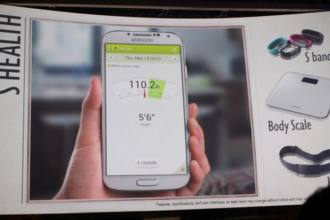Telehealth is a modern healthcare option that is attractive to both doctors and patients for many reasons. It’s cheaper and more convenient than traditional consultations and can improve the overall quality of healthcare by connecting patients with the best physicians for their needs—no matter how far away those physicians might be. Specialists can consult with patients half a world away, which is extremely beneficial for patients with unusual medical concerns. Rural areas are especially suited to telehealth, areas where patients would traditionally have to travel long distances to see a healthcare provider or reach a major hospital. Telehealth is revolutionizing the doctor-patient relationship, but there are significant barriers involved with widespread adoption. The financial side of telehealth might be more cost effective for patients, but doctors are struggling with implementation for financial reasons.
Why is Telehealth Cheaper for Patients?
Telemedicine often reduces the need for transfers and additional consultations, which can save time, money, and stress for patients. Three major telemedicine companies (Teladoc, MDLIVE, and American Well) reported over 400,000 doctor-patient sessions in 2013, which some services provided for about $40 a month for patients. This saved patients between $99-$800 on average per session, depending on whether or not the patient would have gone to their primary care physician, a specialist, or an ER. This study notes that that 25% of Teledoc users were successfully diverted from the emergency room, reducing unnecessary visits. In addition to patient savings, employers can see huge benefits from contracting with telemedicine, potentially saving billions on healthcare costs especially for the rapidly aging population.
Travel Costs: Rural Patients See Greatest Benefit and Savings
Currently, most physicians who offer telehealth services practice in rural areas, allowing patients to receive diagnoses, treatment advice, and follow up without having to travel long distances for monitoring visits. Telemedicine can even save lives by providing expert assistance to local physicians from specialists when travel is not possible. The Alaska Tribal Health System (ATHS) has implemented telehealth with great success, allowing rural patients to save $8-10 million on travel costs since the program was initiated in 2001. Other programs have had similar success, proving that there is a need for telehealth services, particularly in isolated areas. The quality of care remains high for telemedicine patients, particularly for mental health services. Between 2005 and 2013, the U.S. Department of Veteran Affairs experimented with telemedicine at a Vermont hospital with encouraging results. In addition to saving thousands on travel costs for patients, studies showed that therapy was just as beneficial long-distance: “That study, published in The Lancet, found that older veterans with depression benefited from telemedicine talk as much as in-person therapy sessions.”
What is Behind Slow Adoption Rates?
A survey conducted by the Robert Graham Center, American Academy of Family Physicians, and Anthem revealed that only 15% of the 1557 physicians surveyed had implemented telehealth sessions as part of the services they provide. If telehealth can provide low-cost, high-quality health care for the global population, then why aren’t all doctors using this technology for some of their patients? Unfortunately, the savings patients and insurance companies enjoy aren’t always shared by the offices providing the care. Physicians must contend with the cost of equipment, reimbursement struggles from insurance companies, and cost per session. These financial barriers seem to be the main reason telehealth adoption has been so slow. In fact, American Journal of Managed Care notes some surprising numbers from the same survey: “Almost 90% of both users and non-users said they would use telehealth if they were to be reimbursed.” This shows that the overwhelming majority of providers believe telehealth is an important tool that helps improve healthcare for patients worldwide.
Cost of Equipment
The initial outlay that physician offices must make for telehealth equipment is the first hurdle in providing low-cost services. In a National Institute of Justice report, we see that equipment costs can be high initially (over $70,000 in this example), but that the savings start to accrue once enough consultations have been conducted. However, that initial outlay can be a stumbling block for physicians, and many have not been able to implement the technology for their patients thus far. Rural physicians are more likely to implement the technology since they can anticipate a greater need for telehealth services than urban providers. There is good news, however. As with all technology, equipment costs are only going to go down, making telehealth a more accessible option for physicians to offer patients.
Insurance Reimbursement
Insurance companies are not always required to reimburse physicians for telehealth services. While many doctors would be happy to offer these services, it can be far too risky for them to conduct sessions for patients with no guarantee that they will be paid for the time. According to HRSA, while Medicare has defined criteria for what will be reimbursed (telehealth services that mimic face-to-face interactions and originate in healthcare facilities), their website admits that private companies have no such obligations: “There is no single widely-accepted standard for private payers. Some insurance companies value the benefits of telehealth and will reimburse a wide variety of services. Others have yet to develop comprehensive reimbursement policies, and so payment for telehealth may require prior approval.” State laws surrounding reimbursement also vary greatly. Until insurance companies are required to provide reimbursement for telehealth, or most private firms see the value in telehealth services for cutting overall costs, adoption of telehealth services will be slower than patients and physicians would like.
Cost Per Session
Currently, costs per session are not fixed, making widespread adoption problematic. Companies like Teledoc use a subscription-based system, with patients paying a flat fee per month to access telehealth services. Without set rates, the cost per session can be unclear, with consultations and other types of communication (such as email or data transfer) could go unpaid, and practices can easily lose money this way, as CareCloud discusses.
What Can Be Done?
Telehealth is an invaluable tool for patients with a wide range of concerns, and can help bring down the overall cost of healthcare. The demand for telehealth is clearly present, and since most physicians seem eager to participate in this new form of healthcare, removing these financial burdens is crucial to widespread adoption. Convincing private insurance companies and employers that telehealth is an important part of our healthcare system is the only way to improve access. Currently, regulations are still mostly undefined, and until there are more concrete requirements placed on reimbursement policies, telehealth adoption will likely continue to grow only at a slow to moderate pace.







